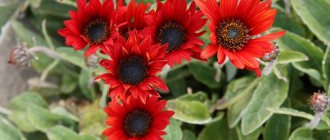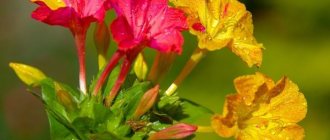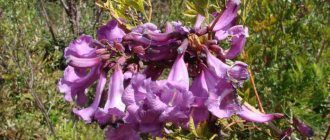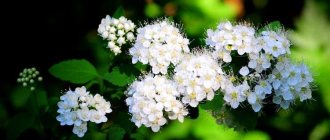Amaryllis is a bulbous flowering plant of the same family. Perennial. Homeland - Olifants River Valley in southern Africa. The distribution area is quite wide. The plant is found in South Africa, Australia, and Japan.
The name of the flower is associated with the famous ancient Roman poet Virgil. Amaryllis, a beautiful shepherdess, appears in his works. From ancient Greek the name is translated as sparkling.
Amaryllis, description of culture
The amazing Amaryllis comes from America, but in nature it can also be found in the southern regions of Africa. The plant belongs to the Amaryllis family. It is valued for its peculiar flowers, reminiscent of drooping lilies, and their unusual colors.
Distinctive botanical characteristics of amaryllis:
- The amaryllis leaf is linear and resembles a long tongue. The width of the foliage is 3-4 cm, and it reaches 50 cm in length. The leaves form a dense rosette and are arranged in parallel, forming two rows.
- The root system of amaryllis is represented by a bulb. The bulb and sap of the plant are poisonous.
- Amaryllis flowers are large and bell-shaped. They are formed on elastic, erect peduncles. The color palette is varied: snow-white, dark purple, scarlet, light green. Most varieties have variegated petals with a velvety surface.
- Amaryllis in bloom releases a strong sweetish aroma. Amazing flowering starts in the fall and lasts about 8 weeks. Large inflorescences of many flowers, which are like a chic bouquet, add sophistication to the plant.
- The species needs rest, so it alternates periods of wakefulness and sleep. After flowering, the bulb is dug up and kept in a heated room in winter.
Interesting! Amaryllis juice was once used to treat arrowheads. Now this plant is used in medicine and is part of anticonvulsants.
Bloom control
Flowering time can be controlled by allowing the bulb to go dormant (stop growing) for a while. Place the container in a cool, dark room (about 10-15 C), checking the water level daily until you see root and top growth (about 2-3 weeks).
Move the container to a bright room, but not in direct sunlight. Amaryllis will bloom 6-8 weeks after being exposed to light and will last for 4-6 weeks. This process will cause the plant to flower if the bulb has enough energy to produce a flower stem.
Amaryllis, varieties
In nature, only one type of amaryllis is more common - belladonna (beauty). But recently another rare species appeared in the amaryllis nomenclature - Paradisicola.
Despite the compactness of the bush, Amaryllis belladonna has rather large flowers. Their colors are often salmon, red, white-pink and purple. The species has many varieties with different petal shapes, leaf sizes and flowering periods.
Here are the most popular varieties:
- Blanda - blooms with large white bell flowers, does not have a fragrant aroma.
- Maxima - this variety has delicate, proudly raised flowers, collected in a large pink bouquet.
- Purpurea - produces tall peduncles dotted with flowers with purple petals and a soft yellow center.
- Minerva - small flowers with striped petals.
- Exotic Star is an interesting variety with narrow-petaled salmon-white flowers.
- Durban - large flowers with carmine-red petals.
- Snow Queen - large, glossy flowers. The base of the flower petals is white with a delicate cream tint.
- La Paz - the plant has an unusual color: the petals are green with a red border.
Amaryllis Paradisicola is not distinguished by its richness of colors and varieties. The species grows a peduncle with a large number of solid pink flowers. There can be about 20 of them in one inflorescence. Amaryllis Paradisicola exudes a delicate aroma. The species is used only for growing outdoors; it does not have hybrid forms.
Growing from seeds
Growing a flower using seeds is considered a complex and time-consuming process that does not give a guaranteed result. When planting, you should take into account all the subtleties or the seeds simply will not germinate. To grow amaryllis from seeds you need to do a lot of work and choose the right equipment.
The growing process can be divided into the following stages:
Preparation for planting the selected seeds, this method begins with the transfer of pollen from one flower to the stigma of another. This can be done using a soft brush. To make the result more effective, the flower should be pollinated twice. Within three weeks after pollination, a seed box appears on the flower, containing about 40-70 seeds. The seeds are considered ripe when small cracks appear on the capsule. The seeds are small in size and have a dark colored skin.
Before planting the seed, carefully remove the peel and plant the seed inside.
Preparing the soil and pot: A medium-sized pot should be chosen so that the seeds are not too close to each other during growth. The composition of the soil for rapid germination should include: leaf soil and humus
The seed should be planted in a prepared place to a depth of 0.5 centimeters and sprinkled with soil. To quickly germinate seeds, it is recommended to adhere to the main rule: you need to maintain the air temperature from +21 to +24 degrees Celsius and maintain soil moisture. If all planting conditions are met, the seed will germinate in within one month.
It is important to know how to plant seeds in a pot correctly. The soil needs to be watered a little before planting. Then the container with the seeds is covered with plastic film to create a greenhouse effect and placed in a dark place where the temperature will not be lower than +23 degrees. After a month, the first shoots should appear. They can be replanted into separate pots only when 2 leaves grow on the sprouts. This will happen in 2.5–3 months. Keep in mind that amaryllis grown from seeds will take 5 to 8 years to bloom.
How to distinguish amaryllis from hippeastrum
Amaryllis and hippeastrum are often mistaken for the same species. They both belong to the same family and are very similar in appearance. But only amaryllis is suitable for growing outdoors. Unfortunately, gardening stores often sell hippeastrums under the guise of amaryllis. It is difficult to distinguish them without experience, because they have the same large bulbs and gramophone flowers.
Therefore, if you are just going to buy amaryllis, find out a few differences:
- The flowers of hippeastrum are very large and often reach 15 cm in diameter, while those of amaryllis are no more than 8 cm.
- Amaryllis has a strong peduncle with 8-12 flowers, while hippeastrum has a loose, tubular peduncle with 2 to 6 flowers.
- Amaryllis readily grows in the garden, and hippeastrum is an exclusively indoor plant.
- Amaryllis has a pear-shaped bulb, it quickly grows children, but in hippeastrum it is small and does not form children.
- Amaryllis produces a peduncle after the foliage dies, and during flowering the hippeastrum has both flowers and a leafy rosette.
- Hippeastrum blooms in winter, while amaryllis blooms in autumn.
Amaryllis in the photo:
Hippeastrum in the photo:
Watering
Amaryllis and hippeastrum - differences, what is the difference
Before flowers appear on the plant, it should be watered moderately. It is only necessary to moisten the soil to prevent it from drying out. Experienced flower growers, from personal experience, generally recommend refraining from the procedure. Then, when the buds set, the amaryllis should be watered generously until the flowering period ends. It is better to use settled warm water, rainwater will do.
Not only waterlogging, but also drying out of the soil is dangerous for the plant, so you need to find a middle ground. To retain moisture, you can use sawdust when mulching the soil.
Mulching with sawdust
Amaryllis, planting and care
Heat-loving amaryllis is grown in open ground in warm regions where there are no winter frosts. But you can have this beauty in a more severe climate, you just need to put it in a pot every fall and take it home.
Choosing a place to plant amaryllis
- Amaryllis requires a lot of bright light. It is planted in a spacious area without tall plants and buildings. The south side of the garden, protected from the winds, is suitable for him. Amaryllis develops well on rocky alpine hills.
- The most important condition for an amaryllis plant is well-drained soil. To plant amaryllis, you can buy a ready-made soil mixture for bulbous crops.
- The predominance of heavy, clayey soil requires the addition of rotted compost into the pit.
Rules for planting amaryllis
Amaryllis bulbs are inspected before planting. A healthy plant has a dense bulb with scales without traces of rot or mold. If spots and traces of decay are found, the affected areas are cut off and the fresh area is treated with charcoal. Before planting, the bulbs are kept in a solution of potassium permanganate.
Planting amaryllis:
- The bulbs are planted in March.
- A drainage ball is placed at the bottom of a spacious hole.
- The bulbs are deepened by 15 cm, completely covered with soil.
- If group planting is carried out, a distance of 25 cm is maintained between the bulbs.
- After planting, the amaryllis plant is not watered, and only when the sprouts grow 10 cm, do they provide abundant watering.
- Immediately mulch with sawdust so that the top layer of soil does not dry out, which has a detrimental effect on the bulb.
Important! In regions with a hot climate, amaryllis is planted before winter, in October-November, without subsequent transfer to a pot for the winter.
Selecting seeds for a greenhouse
It is very important to choose the exact variety of tomato that will be suitable for the greenhouse. There are special “greenhouse” varieties that should be given preference first of all. They grow well in a greenhouse and produce a high-quality and rich harvest. These include:
— Bull's heart. This species is characterized by very high productivity, large and pleasant-tasting fruits.
— Miracle of the Earth is the most ideal variety for greenhouse conditions.
— Samara has sweet and juicy fruits. This variety grows well in a polycarbonate greenhouse.
— Long keeper, with proper care, can produce a harvest of up to 4 kilograms per bush.
— Moneymaker is an early variety that can be planted in a greenhouse in March and harvested in early summer.
— Dina is an excellent variety for greenhouses, which produces a yield of up to 5 kilograms per bush.
There are also more exotic varieties.
Read: Aphelandra«>
Amaryllis, outdoor care
If the climatic conditions are suitable for the amaryllis, caring for it will not be difficult.
Watering and fertilizing amaryllis
Immediately after planting, amaryllis is watered moderately. When the plant reaches 10 cm in height, watering is increased. A growing plant needs a lot of moisture, so the ground near the roots is mulched with sawdust.
Amaryllis is fed during the warm period. Every two weeks, organic matter and minerals are added alternately:
- Mullein (150 g per 5 liters of water) or bird droppings (35 g per 5 liters of water) are used as organic fertilizers.
- Mineral fertilizers are used with a predominance of potassium and phosphorus (take 3 g of the mixture per liter of water).
- You can use the following complex fertilizer: 150 g of ammonium nitrate, 400 g of potassium salt, 350 g of superphosphate.
Advice! Amaryllis peduncles are tall with many flowers, so during the flowering period the plant needs support.
Amaryllis has faded, what to do?
If amaryllis is grown in a warm climate, it is not dug up and covered with peat chips for the winter.
In regions with frosty winters, amaryllis is dug up for storage after flowering:
- To do this, gradually reduce watering and stop applying fertilizers.
- When the entire above-ground part has withered, the bulb is dug up and transferred to a flower pot.
- Keep the plant at a temperature of 10-12⁰C, water sparingly through a tray.
- Or the bulb is wrapped in paper and stored in the cellar, provided that the temperature there does not drop below 0⁰C.
Amaryllis, transplant
Once every three years, the plant, which overwinters in open ground, is replanted to separate the children. Do this after flowering ends:
- The soil is watered so that the bulb is easily separated from the earthen clod and the roots are not damaged, then they are dug up.
- The peduncle is cut off at the base and excess scales are removed.
- Then the children are carefully separated and planted together with the mother bulb in the ground without watering.
Advice! It is recommended to replant amaryllis if it has stopped blooming or signs of disease have appeared on the leaves.
LiveInternetLiveInternet
Good evening, dear gardeners and indoor plant lovers. Two weeks ago I was at the market, accidentally met my grandfather, he was selling some strange bulbs with leaves and soil in a bag. I asked what kind of plant it was), and he replied that he didn’t know, but it was very beautiful. Said he dug it from his garden. Well, I bought two onions for one buck. I planted it in my garden, in open ground. Less than two weeks later, the flowers bloomed. It turned out to be amaryllis. And bad luck... I always thought it was a houseplant; my grandmother had one in a pot all her life, but it very, very rarely bloomed. I started looking for information on the Internet. Maybe some of you will find it useful too?
I’ll add later: in the comments they wrote that this is not amaryllis, but hipperastrum (I don’t even know))) should I be happy or what)))
This flower has been familiar to me since childhood. Out of habit, we call it amaryllis, although it is the most common non-varietal hipperastrum. We never part with it; it is our family heirloom. I'm sure it can be found in many other collections.
Amaryllis is a bulbous plant that blooms very beautifully. Its fragrant and large flowers can be different: white, red, pink, striped or plain in color. On a high peduncle, inflorescences are arranged singly or in several pieces. The flowers are very beautiful, but small and have no scent at all. All it needs is limited placement; it grows well on windows of eastern, southern, and western orientation. It is important for it to receive sufficient amounts of sunlight; in such conditions, this hipperastrum actively blooms and does not suffer from red burn of the bulb. Watering is moderate; between waterings the top layer of the earthen clod is allowed to dry.
Transplantation is carried out in the spring, in a mixture for amaryllis. This variety is good to plant in groups of several in a pot, then the flowering will be very long. For planting, you should not choose too spacious a container - then the plant produces many children and blooms poorly.
Question: Is it possible to grow amaryllis in a garden plot in open ground?
Answer: In summer, amaryllis can be kept in the garden outdoors in a flowerpot or tub. You can plant it on the site, taking it out of the pot, or you can dig it directly into the pot. True, in the fall it will be necessary to change the soil, since over the summer all kinds of living creatures will come into the pot that are undesirable for a potted plant if kept in winter, because for lack of other food it will begin to eat the roots and the bulb itself. And you shouldn’t injure the roots by replanting again, otherwise flowering will be postponed indefinitely. Amaryllis cannot overwinter in open ground, even with shelter.
Question: Why do the leaves dry out? And new ones grow to replace them right away...
(This is the second time this has happened to me in the short period of its existence.)
Answer: So this is the normal development cycle of plants, be it an indoor plant or growing outdoors! You’re not surprised by the annual autumn leaf fall, so why such a reaction to the change of leaves in indoor plants? Plant leaves do not last forever; new ones grow to replace old ones.
If the conditions are not suitable for the indoor plant, this process may occur faster and more often than necessary, and may become irreversible. Then the plant dies. Don't let it come to this 
Question: The onion has no roots. How to root it?
Answer: Take regular soil from the site or buy universal soil, freeze for 6-8 hours, warm the soil to room temperature (+20-25°C), add the drug Kornevin to stimulate root growth. Add a 3-5 cm layer of coarse calcined sand to the bottom of the hole. Powder the bottom of the bulb with Kornevin and plant.
The height of the pot should be greater than its diameter, and the distance from the edge of the pot to the bulb should be 2-3 cm. Be sure to place drainage at the bottom of the pot; the pot must have a drainage hole. Do not bury the bulb; it should protrude a third above the soil surface. Water moderately, do not over-moisten the soil, otherwise the bulb will rot instead of rooting.
Question: How to distinguish amaryllis from hippeastrum?
Answer: Amaryllis can be easily distinguished from hippeastrum by the structure of the peduncle - in hippeastrum it is hollow (empty inside) and bears 1-6 large flowers, and in amaryllis the peduncle is completed (filled from the inside) and bears 8-12 large, drooping flowers . This is the surest distinguishing feature.
Leaves are formed after the flower arrow emerges or simultaneously, but not before. Another distinctive feature is that hippeastrum, unlike amaryllis, forms daughter bulbs irregularly.
Question: My bulb lost a lot of weight after flowering. How can I help her restore her volume?
Answer: An amaryllis bulb will only be able to “gain weight” in the next growing season if it is not allowed to bloom and the flower shoot is removed. And in the fall, do not cut off the green leaves, but wait until they turn yellow and return the nutrition spent on them to the bulb. Don't forget about feeding during the season.
In the garden, a well-lit place, for example an unshaded southern side, is best suited for amaryllis, since these are light-loving and heat-loving plants. The soil should be of light mechanical composition, that is, sandy or sandy loam; rich in humus with a high humus content is also suitable. Amaryllis prefers open, well-lit places and direct sunlight. Amaryllis is afraid of frost, so for the winter the bulbs need to be dug up and stored indoors, planted again with the onset of stable warmth. Amaryllis feels great in a well-lit place, loves a lot of light and really does not like coolness with drafts. Amaryllis can grow in light partial shade, but then the growth of the plant slows down.
Reproduction: amaryllis is propagated by regrown daughter bulbs - children, which can be separated from the mother bulb during spring transplantation. Already in the 2-3rd year, flowers appear from the daughter bulbs. If you want there to be many flowering arrows in one flower pot, the solution is simple - do not separate the children from the mother.
Feeding:
- spring-summer - once every 2 weeks with mineral and organic fertilizers;
- winter-autumn - without feeding.
Pruning: no need.
Care features: The plant is poisonous!
Transplantation: Amaryllis are usually planted in small flower pots in November-December. But with the same success you can plant in March-February. At the bottom of the pot, organize drainage from broken shards and only after that add a soil mixture consisting of turf, leaf, peat soil and sand (1: 2: 1: 1). Before planting, it is very useful to soak the bulb in a Humisol solution, and then plant it in a pot, burying it halfway into the ground. It is best to place the pot on the windowsill of a south-eastern or south-western window, since amaryllis is a light-loving plant. And don’t forget to water the planted bulb.
Small bulbs are planted together. Feed once every two weeks. After the leaves dry out, watering is almost stopped. Withered leaves are not cut off. Amaryllis are replanted every 4-5 years.
There is nothing easier than growing amaryllis: just a bulb, water and sunlight.
The bulbs have virtually no dormant period. After the plant has flowered, there is no need to do anything with the vegetative part and bulbs. It is enough to simply remove the flower stalks without affecting the leaves, as they will replenish the supply of nutrients in the bulb. After flowering, the bulb should be grown for 5-6 months.
As a houseplant, amaryllis is grown until early summer, but one should not forget about regular watering, and use standard fertilizers as top dressing. When the danger of frost has passed, the plant can be transplanted outside to a dark place.
To force amaryllis to bloom in winter, the bulbs must go through a dormant period. In August, you can stop feeding and gradually reduce the amount of water given. After three weeks, stop watering completely. Allow the leaves to yellow and wilt on their own. Cut the leaves at a height of 5 centimeters from the bulb.
In September or early October, plant the bulbs in a pot and place them in a cool (13-15°C), dark and dry place for 6-8 weeks. As long as at least one leaf remains green on the plant, it does not enter a dormant period. It is enough to put a pot of bulbs in the basement and forget about it for 2 months.
In November or later, place a pot of amaryllis in a lighted area, water it, and the vegetative cycle will begin all over again.
The soil should be damp, but under no circumstances wet. After flowering begins, do not let the soil dry out too much. Remember to rotate the pot daily to ensure the leaves grow evenly. The ideal temperature is 13–18°C. Higher temperatures weaken growth. Be careful: flowering should begin 4-8 weeks after watering the bulbs is resumed.
Possible reasons for lack of flowering: Immature or small bulbs, too short dormant period, very high temperatures during the growing season. It should be noted that the longer you have the bulb and the larger its size, the more flowers and leaves it produces, so it makes sense to store and use them year after year.
Reproduction
All bulbous plants: hippeastrum, amaryllis, lilies, tulips and others, reproduce by daughter bulbs, which are separated from the mother plant during transplantation. This is the easiest way to propagate such plants. Planting daughter bulbs is no different from planting the mother plant during transplantation: the composition of the soil and the height of planting the bulb are the same. The pot should be taken based on an adult onion. Young plants grow quickly and reach the size of the mother bulb in two years, and amaryllis often do not need to be replanted.
The second way to propagate amaryllis is by seeds. To obtain seeds, amaryllis flowers must be cross-pollinated with a brush and allowed to ripen. The process of seed ripening lasts about a month, after which they are immediately planted in the ground and watered well to keep the ground moist. In about a month, shoots will appear. When the plants grow, they are planted one at a time in small pots.
When propagated by daughter bulbs, a flowering plant can be obtained in the third year; when grown from seeds, amaryllis blooms in the 7th year.
Transfer
Transplantation is carried out after flowering has finished and the flower shoot has dried. The soil for planting is made up of equal parts of leaf, turf, humus soil and sand or purchased at a store for bulbous plants. The bulb, which was removed from the old pot, is freed from rotten roots and dry scales, from the children that form in the axils of the outer scales of the mother plant. The bulb prepared in this way is planted one at a time in a pot so that at least 1/3 of the height of the bulb is on the surface. You can leave it on the surface up to half the height of the bulb. The pot must have a layer of drainage, and it is advisable to pour a layer of sand under the bottom of the bulb. Amaryllis does not tolerate stagnant water. It is much safer to forget to water this flower than to flood it. The pot should not be too big. From the edge of the bulb to the edge of the pot, it is enough to have about 3 cm of free space.
Pests and diseases
Sometimes amaryllis can become affected by a fungal infection: red spots or stripes appear on the stem, flowers and bulbs. To prevent this disease, it is recommended to wet the plant as little as possible when watering. If the amaryllis does get sick, you can use special preparations: Bordeaux mixture, HOM or foundationazole.
So where is the best place to plant amaryllis?
Option one is open ground. Choose the best place for amaryllis somewhere in a sunny place, among the stones. Amaryllis looks very beautiful against the background of low-growing conifers. The “disadvantage” of such a planting is its strong dependence on weather conditions. In the event of late spring and early autumn frosts, heat-loving amaryllis will have to be carefully covered. And you will need to dig up its bulbs in the fall no later than the end of September (after all, in October the top layer of soil in the middle zone already begins to freeze slightly). And if your amaryllis just bloomed in September, then the bulb simply will not have time to ripen normally before digging it up. The “plus” of planting amaryllis in open ground is a stunning sight when, against the backdrop of falling leaves and autumn flowers, such a miracle suddenly appears from underground!
Option two is to plant amaryllis in a pot or any other container. You can install it on the balcony or directly in the flowerbed. By the way, no matter where you plant amaryllis, remember that you need to plant its bulb quite shallow. The top of the amaryllis bulb should be just visible above the soil surface (if you are growing amaryllis in a pot), or should be covered with a very thin layer of soil (if you are planting amaryllis in open ground). For the winter, it is better to put amaryllis bulbs on the bottom shelf of the refrigerator (along with gladioli); They are stored well and hardly dry out by spring.
Some of the information was found at https://www.botanichka.ru/blog/2010/01/01/amaryllis/
Marrietta
Amaryllis, propagation
Amaryllis is propagated in two ways - by sowing seeds and separating daughter bulbs.
Propagation of amaryllis by bulbs
Like all bulbous plants, amaryllis is actively acquiring new bulbs. Separating them is the easiest way to get new amaryllis bushes.
The daughter bulbs are planted like this:
- The babies will be separated from the mother bulb before spring planting.
- A layer of drainage is placed in the prepared hole.
- Then the bulbs are planted in the ground.
- New bulbs bloom for 2-3 years.
Amaryllis, growing from seeds
Amaryllis seed propagation is difficult and does not always end in success, so it is rarely used. In addition, a plant grown from seeds blooms only in the seventh year.
To obtain amaryllis seeds, it is cross-pollinated (passed with a brush over the flowers). The seed ripening period is 2-3 months. They are removed from the box and seeded:
- Drainage up to two centimeters high is poured into the container.
- Then a nutrient substrate is laid, the same as for planting bulbs.
- The soil is compacted and seeds are sown in grooves up to 2 cm deep.
- Leave a distance of 1-1.5 cm between the seeds.
- The soil is moistened with a spray bottle, avoiding overflowing and drying out.
- A month later, when the shoots have grown, they are planted in separate pots.
Possible problems
The bulb fly can lay eggs in amaryllis bulbs that are placed outside in the summer. The larvae feed on the outer scales of the bulb and eventually burrow inside. The foliage of infected plants may become wilted, yellow and misshapen, and the plant will eventually die.
Since control is difficult, it is best to destroy infected bulbs as soon as the infestation is discovered. The use of insecticides is usually ineffective.
Falling long stems and flower heads can be the result of insufficient light, overwatering or exposure to temperatures that are too cold. Next year, place your potted amaryllis in a sunnier, warmer location, withhold water, and try turning the container every few days.
Red spots on leaves are caused by a fungus known as Stagonospora curtisii. Try cutting off the affected part of the leaf as soon as you notice signs of the disease.
Red spots or spots that develop into elongated sores with red edges may develop at the base of the pedicels and emerging leaves. Healthy bulbs may develop small superficial red or pink spots. The fleshy layers of the bulb underneath these spots should be white and unmarked. Leaves can become misshapen and flower stems can break easily, making the plants unsightly.
To avoid this disease, plant the bulbs in a clean container with sterile new soil. Wipe pruners and stakes used on new plants with rubbing alcohol. Care for your plants properly. If the disease persists, the bulbs can be treated with a systemic fungicide.
Diseases and pests of amaryllis
Pests and bacteria can damage the bulb and aerial parts of the amaryllis. Moreover, damage to the bulb almost always leads to the death of the plant.
What to pay attention to in order to save amaryllis in time:
- The onion mite causes yellowing of the foliage, cessation of flowering, and wilting of the flower shoot. Insecticides are used for treatment.
- False scale - leaves become covered with brown spots. Use insecticide and soap solution.
- The amaryllis mealybug provokes the death of leaf blades, new greenery grows very slowly. This parasite lives between the scales of the bulb. For treatment, damaged areas of the bulb are cut off. Then, for a month, the soil with the bulb is treated with an insecticide.
- Fusarium - greenery turns yellow and fades. The bulb is dug up, rotten parts are cut off, and treated with an antifungal agent. If most of the bulb is affected by rot, it is destroyed.
- Viral mosaic - the virus is carried by thrips. The leaves change color and become covered in patterns. The disease is difficult to treat, so the plant is often destroyed.
- Slugs and snails eat the succulent foliage of amaryllis. Pests are collected by hand or dolomite flour is used.
- Narcissus fly - its larvae destroy foliage and gradually penetrate the bulb. For prevention, the soil is impregnated with Zemlin.
- Anthracnose - the foliage darkens and brown streaks appear on it. The bulb is transplanted to a new place with pre-treatment with Fitosporin.
- Red burn - the foliage and flower frog become covered with red spots caused by fungi and mites. To save the plant, you need to dig up the bulb and immerse it in water at a temperature of 46⁰C for 2 hours.
Taking amaryllis outside
Keeping the plant healthy and growing throughout the summer will promote longer flowering.
Once the flowers have finished blooming, it is best to trim the entire stem as close to the base as possible. The plant can now grow and bloom a second time and produce foliage when flowering is complete. Fertilizing is especially important at this stage to ensure the bulb is ready to bloom next year.
If there is no risk of frost, you can leave your amaryllis outside during the spring and summer months. Place it in a sheltered location where there is not too much sunlight, and water more infrequently, without allowing the soil to dry out completely. Once the leaves begin to die back, reduce watering until the compost is just damp, allowing the amaryllis bulbs to go dormant.
When fall arrives, move the amaryllis back inside and start the cycle again.
How to care for amaryllis, possible problems
Amaryllis quickly reacts to inappropriate lightening, lack of minerals, humidity levels and other external factors.
Why doesn't amaryllis bloom?
When growing amaryllis, a problem that often arises is the lack of flowering. In amaryllis, flowering is delayed for the following reasons:
- Poor soil: amaryllis is very picky about the composition of the soil, so a lack of nutrients leads to the cessation of flowering.
- Wrong choice of planting location: lack of light and clay soil lead to the fact that amaryllis does not bloom.
- A large number of daughter bulbs: if the plant lives in the soil without replanting for the winter, the bulbs must be separated every three years.
- Incorrect planting of the bulb: if the amaryllis is planted more than 15 cm deep, it will not be able to form a full-fledged peduncle.
Why does amaryllis foliage turn yellow?
If a plant's leaf rosette has turned yellow, there are two reasons: either aphids and thrips have settled on the leaves, or excessive watering is carried out.
In the first case, you need to treat the amaryllis with Actelik, in the second case, adjust the watering.
Why do amaryllis have pale leaves?
When a plant is planted in an area with open, scorching sun, its foliage fades. If this happens, the amaryllis needs to be shaded a little.
Paleness and partial wilting of leaves may be the result of waterlogged soil and lack of drainage. Another reason is spraying the leaves: amaryllis does not tolerate this.
Stepson rules
Two weeks after planting the seedlings, pinching is carried out. During this period, the plant grows by 5-7 cm, which indicates that they are ready for this treatment. Stepping is carried out in the morning. Carefully form a bush, removing the lower leaves, ovaries in the axils and additional stems. The treatment is carried out in such a way that the bush has a maximum of two good, thick stems. It is advisable to remove all other branches.
Attention: After pinching, the plants should not be watered for one or two days.
Further, for high-quality development, it is necessary to observe the correct feeding and watering regime throughout the entire period of tomato growth. Only in this case can a rich and high-quality harvest be achieved.
Did you like the article? Please share with your friends 
1+











